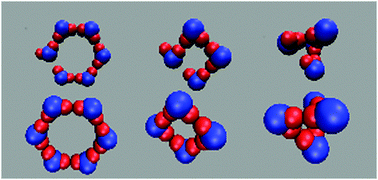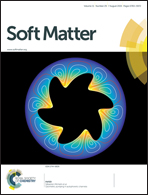Generalization of Wertheim's theory for the assembly of various types of rings
Abstract
We generalize Wertheim's first order perturbation theory to account for the effect in the thermodynamics of the self-assembly of rings characterized by two energy scales. The theory is applied to a lattice model of patchy particles and tested against Monte Carlo simulations on a fcc lattice. These particles have 2 patches of type A and 10 patches of type B, which may form bonds AA or AB that decrease the energy by εAA and by εAB ≡ rεAA, respectively. The angle θ between the 2 A-patches on each particle is fixed at 60°, 90° or 120°. For values of r below 1/2 and above a threshold rth(θ) the models exhibit a phase diagram with two critical points. Both theory and simulation predict that rth increases when θ decreases. We show that the mechanism that prevents phase separation for models with decreasing values of θ is related to the formation of loops containing AB bonds. Moreover, we show that by including the free energy of B-rings (loops containing one AB bond), the theory describes the trends observed in the simulation results, but that for the lowest values of θ, the theoretical description deteriorates due to the increasing number of loops containing more than one AB bond.


 Please wait while we load your content...
Please wait while we load your content...